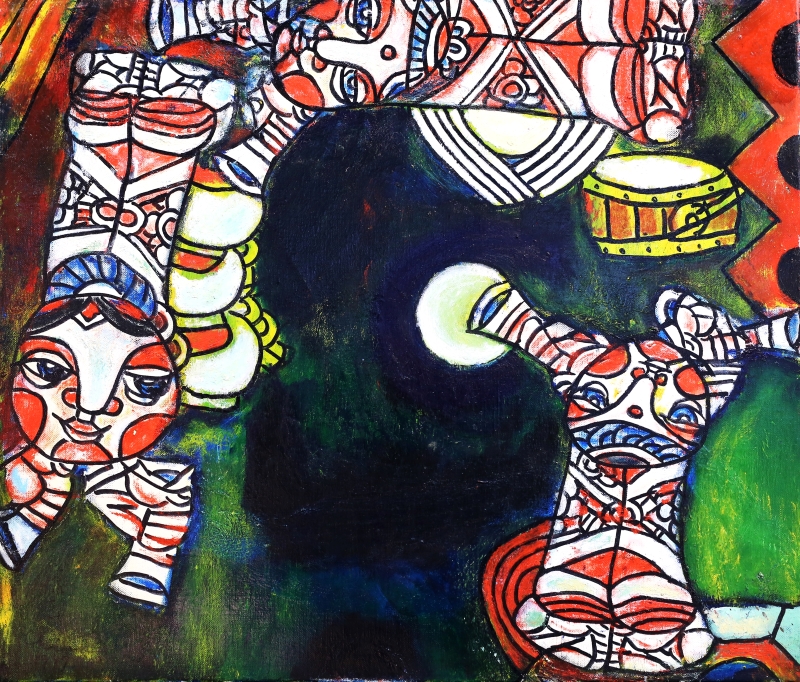Han-Tung CHIANG
Taiwan/Taipei
CHIANG Han-Tung was born in Changting, Fujian. After moving to Taiwan, he studied under Lee Chun-Shan. During his formative years, he was influenced by Western Cubism. Although his painting subjects primarily consisted of folk legends and narratives, he broke away from traditional painting methods. He used delicate lines to segment human figures and buildings, combined with bright and simple colors, and rich, full compositions, to create a lively, magnificent, and modern folk style.
CHIANG Han-Tung suffered from eye disease for a long time, which forced him to work very close to his paintings, completing them step by step as if climbing a grid. Despite the physical limitations, he found a greater space for imagination. He painted stories he heard in his childhood, biographies he read, and everyday life details, with his characters emanating a sense of innocence and simplicity. In 1959, CHIANG Han-Tung was invited to participate in the São Paulo Biennial. Subsequently, he held solo exhibitions at the National Taiwan Museum of Fine Arts, the Taipei Fine Arts Museum, the National Museum of History, and the Austrian National Museum of Humanities. Since 1983, Apollo Art Gallery has held 12 solo exhibitions for CHIANG Han-Tung. This time, at Art Taipei, the gallery plans to showcase his oil paintings from the 1970s.

